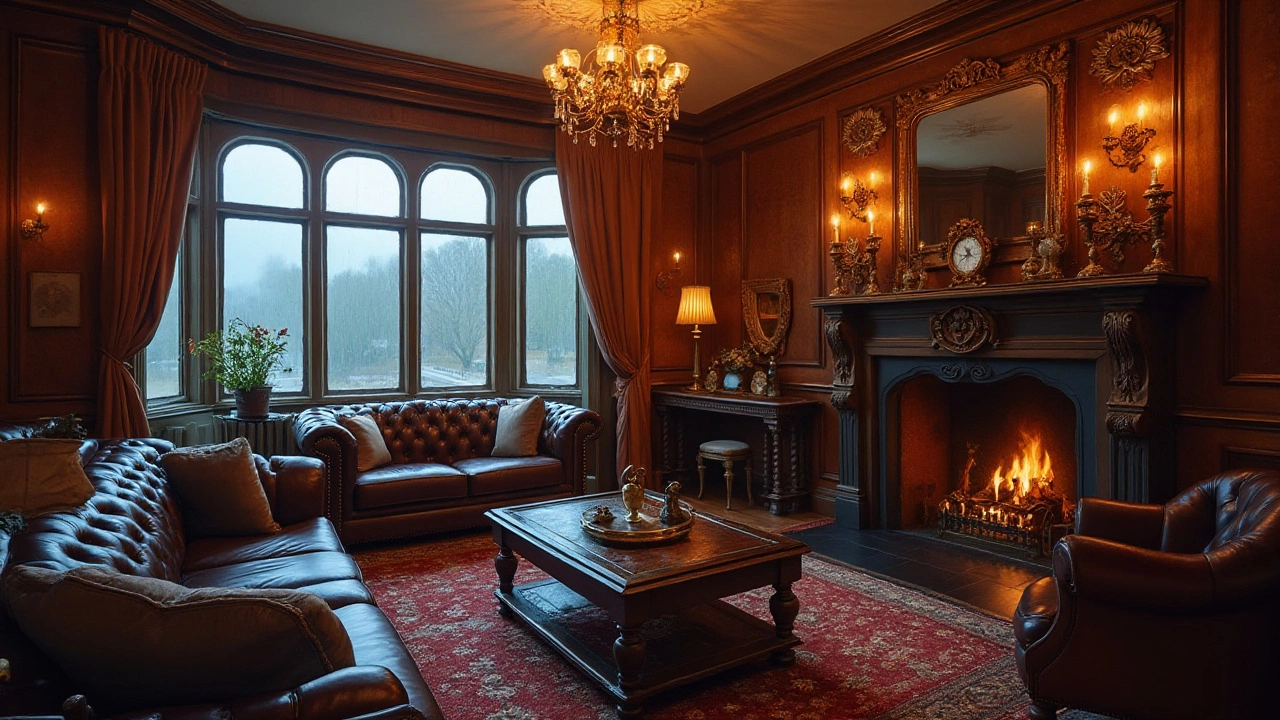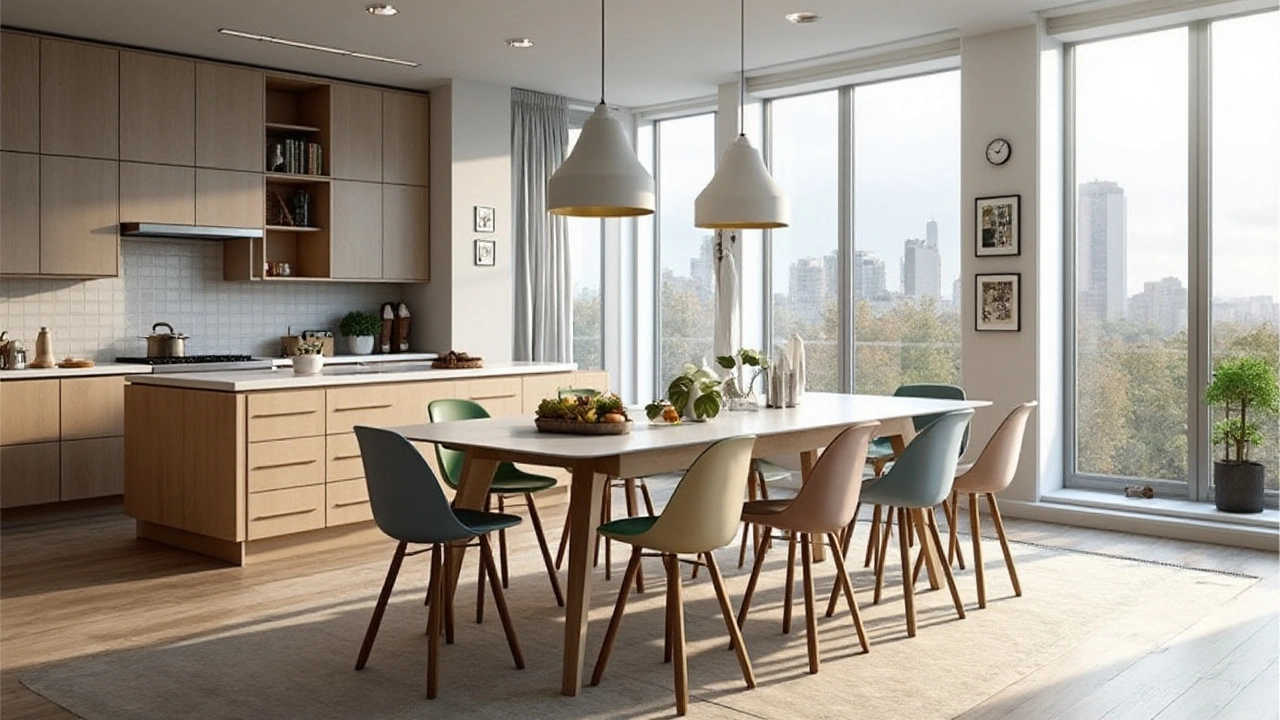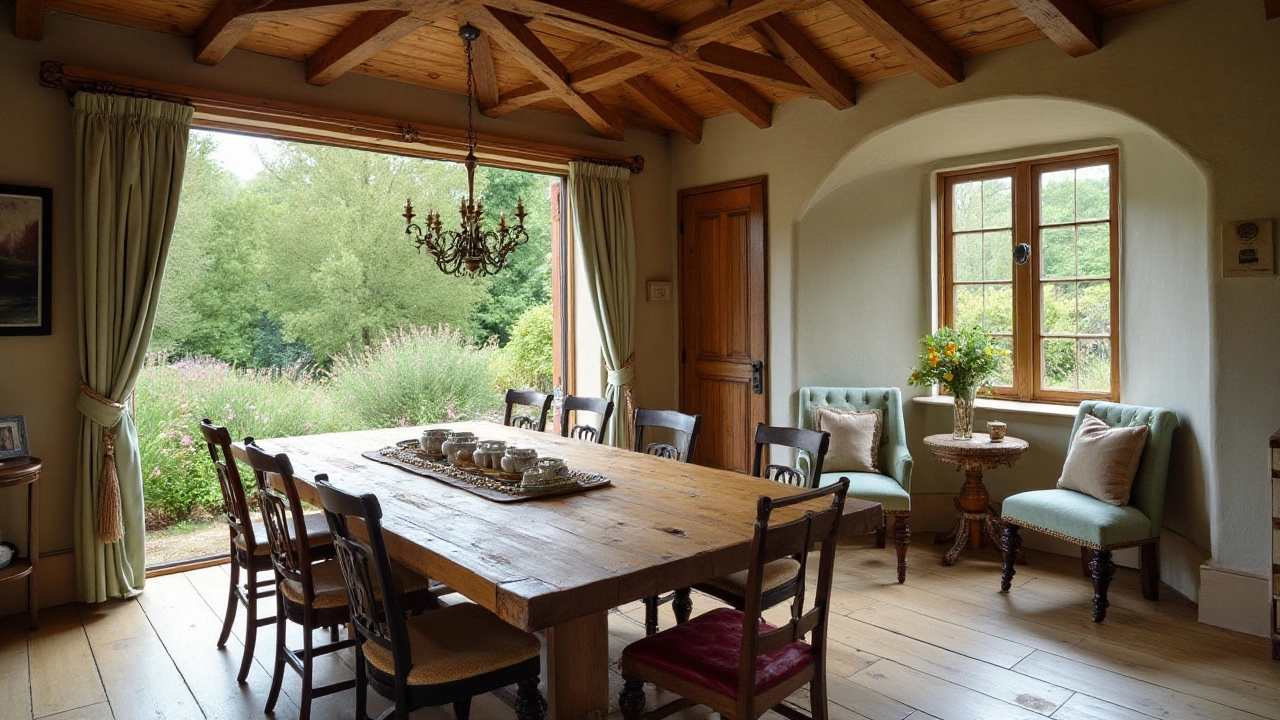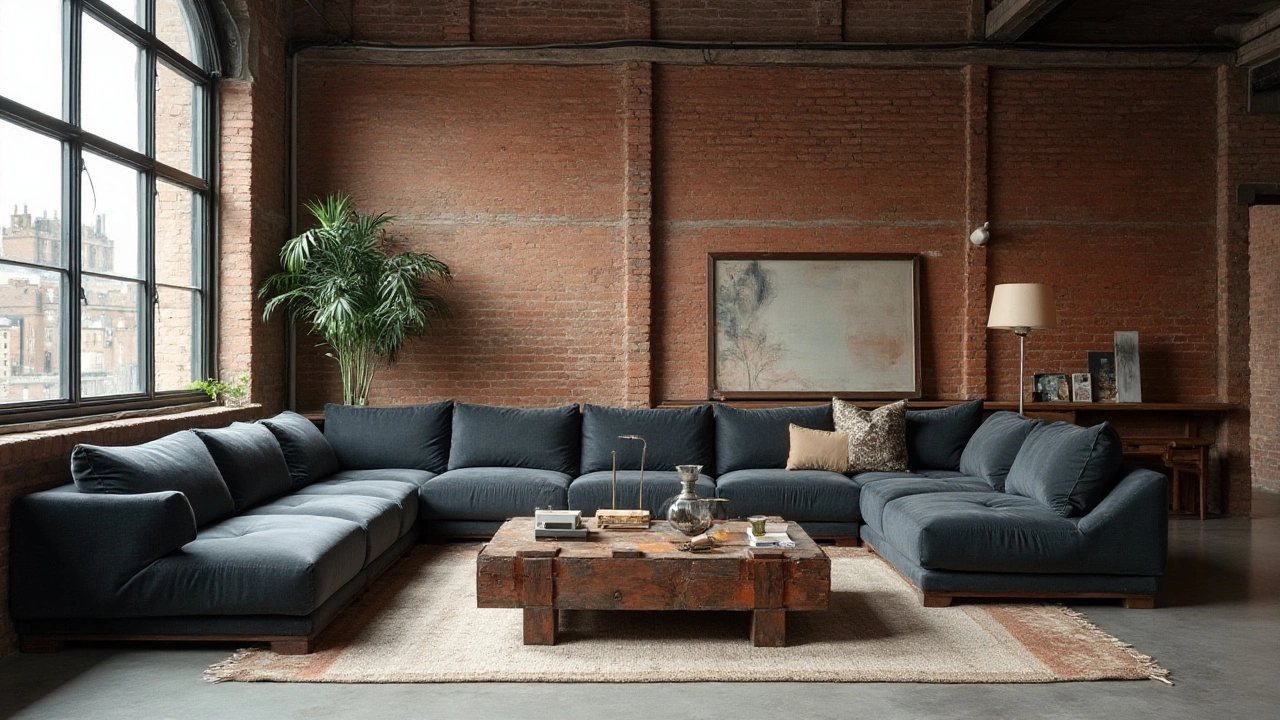The World's Favorite Furniture: Unveiling the Most Sold Pieces
 Sep, 29 2024
Sep, 29 2024
It's fascinating how certain furniture pieces seem to appear in homes around the globe, transcending cultural and economic boundaries. These items become ubiquitous, not just because of their functionality, but often due to an interesting mix of tradition, style, and practicality. Understanding why certain furniture pieces are the most sold helps unravel a bit of why they hold such mass appeal.
Whether it's the timeless charm of a beautifully crafted chair or the unassuming presence of a reliable table, these pieces have stories to tell. They reflect not just current design trends but also innovations aimed at enhancing comfort and usability. This exploration into the world's best-selling furniture sheds light on why these items remain household favorites, bridging the gap between mere utility and a piece of art adorned with personal stories.
- The Iconic Chairs that Sit in Every Home
- Tables that Tell More than Just Time
- Beds: From Resting Places to Lifestyle Statements
- Wardrobes and Storage: More than Meets the Eye
The Iconic Chairs that Sit in Every Home
There's something universally appealing about a well-designed chair. It's not merely a place to rest tired legs; it's a declaration of style and comfort, often anchoring the aesthetic of a room. Among these ubiquitous items, certain chairs have climbed their way to the top of furniture sales charts worldwide. Perhaps one of the most iconic is the Eames Lounge Chair. Designed by Charles and Ray Eames in 1956, it embodies ultimate luxurious comfort with its distinctive shape and high-quality materials. It's been a symbol of style for decades, showcasing the perfect marriage of function and form, making it a beloved choice for homes and offices alike.
This chair, among others, adds character and often sets the tone for the space it inhabits. Opting for a best-selling chair like the Eames offers a slice of history and sophistication. The chair’s popularity lies not only in its timeless design but in the undeniable comfort and durability that it provides. Its build, typically crafted from rich leather and molded wood, hints at a simple yet elegant design philosophy.
"Recognizing the need is the primary condition for design," said Charles Eames, encapsulating why this chair continues to captivate hearts.Indeed, iconic chairs like these have adapted to modern needs while maintaining a classic essence.
Aside from classics like the Eames, mid-century modern designs remain hugely popular. Consider the ergonomic marvels of Scandinavian design, such as Hans Wegner's Wishbone Chair. It blends the gentle curves and sturdy frames that make it an enduring staple in dining areas. Its lightweight yet durable structure, typically made from wood with an organic finish, seamlessly fits into various interiors, evolving alongside contemporary tastes. Such chairs demonstrate how furniture can act as an expression of individuality, setting a precedent for other best-selling furniture items. The gradual shift from mere utilitarian objects to lifestyle statements is reflected well in the immense variety and demand these chair designs continue to enjoy worldwide.

Tables that Tell More than Just Time
When we think about a table, visions of dining rooms and office board meetings come to mind. Yet, these essential pieces of furniture are more than just flat surfaces propped upon legs. They are integral to our daily lives and have been since ancient times. Historically, tables have carried the weight of family dinners, important negotiations, creative explosions, and even where vital decisions about the fate of nations were made. The dining table, in particular, holds a special place in the global furniture market, where it tops the list of best-selling furniture. Across cultures, the table is a symbol of unity and togetherness. From the bustling streets of Tokyo to the quaint villages of Tuscany, there's a universal recognition of its importance.
One should not overlook how tables have evolved alongside humanity. Used for thousands of years, their design has advanced from simple stone slabs and wooden tops to elegant pieces crafted from a range of materials, including glass, marble, and even sustainable resources like bamboo. A table's function has also expanded from its basic use to being multifunctional pieces catering to modern needs—be it a minimalist setup that integrates wireless charging or a rustic piece that brings character into a contemporary space. It's not just the dining room where tables shine, but also in home offices, living rooms, and outdoor settings. In many cases, tables have become focal points of these areas, reflecting personality and giving a sense of identity to a room.
In recent years, the trend towards smart home technology has even crossed into the realm of furniture. Tables that feature built-in electronics, like Bluetooth speakers and wireless chargers, are no longer a rarity. These technologically infused pieces are especially popular in urban areas where space and functionality are crucial. A smart coffee table can act as a hub for your digital life while continuing to serve its basic function. This meeting of technology and design opens up a whole new chapter for furniture makers and buyers alike, emphasizing tables as more than mere places to gather.
The Craftsmanship Behind Popular Designs
Many traditional designs remain sought after, such as the Scandinavian table known for its clean lines and minimalistic appeal. This elegance makes it a favorite not only for homes but also in larger public spaces like cafes and restaurants. Scandinavian designs focus on functionality and simplicity, but never at the expense of beauty. On the other end of the design spectrum are tables inspired by the Victorian era, with elaborate carvings and intricate woodwork that often lean towards being masterpieces of art. Yet no matter the style, the craftsmanship remains a central element in the world of furniture sales. An intricate design elevates a table from being a utilitarian object to a valued piece of décor that tells a story of artistry and skill.
Tara Bernerd, a reputed interior designer, once noted, "A table sets the tempo of a room like a soundtrack sets the mood for a movie." Her words speak volumes about how integral tables are in setting the tone and function of a space, beyond their obvious utility.
Whether you're looking for a piece that harmonizes with your existing décor or something that can stand as a signature piece in its own right, the myriad of choices reflect not just current trends but the ever-changing tapestry of human taste and need. The success of tables in the market is a testament to their enduring value and utility, a reality only punctuated by their broad adoption across different cultures and lifestyles.

Beds: From Resting Places to Lifestyle Statements
The bed has evolved far beyond its primary role as a place for rest. Over the years, it has become a centerpiece of the bedroom—a personal sanctuary and a reflection of one's style and comfort requirements. In the realm of furniture sales, beds often top the charts due to their indispensable nature in our daily lives. From sleek, minimalistic designs to ornate, luxurious styles, the bed is a canvas for personal expression, often setting the tone for the entire room.
Functionality remains a key consideration, with many opting for beds that offer more than just a space to sleep. Storage beds, which come with drawers or compartments, cater to the needs of those looking to optimize their space without compromising on design. For instance, platforms and fold-away models can transform a bedroom into a multifunctional room, ideal for those with limited space like urban dwellers. Beds have become multifaceted, offering solutions for sleeping, storing, and even entertaining.
The design trends in beds have also played a major role in pushing sales numbers. In recent years, there has been a resurgence in interest towards sustainable and eco-friendly materials, with many manufacturers now offering beds made from responsibly sourced wood or recycled materials. This not only appeals to the environmentally conscious buyers but also reflects a broader shift in the industry towards responsible manufacturing. As interior design becomes more about personal well-being and sustainability, these trends are likely to grow.
"A good bed, and good sleep, is not just about health, but about the quality of life itself," according to sleep expert Dr. Matthew Walker. This sentiment is echoed in the consumer demand for beds that enhance sleep quality, another aspect that manufacturers are keenly focusing on.
A table comparing bed features might look like this:
| Feature | Description |
|---|---|
| Material | Sustainable woods, recycled metals |
| Design | Minimalist, Modern, Rustic |
| Functionality | Storage options, Multifunction designs |
| Size Variations | Queen, King, Twin, Custom |
The rise of online furniture stores has revolutionized how people shop for beds. Shoppers can now compare styles, read reviews, and even customize features—all from the comfort of their current bed. This ease of access has led to increased competition among brands, driving innovation and offering a range of products that cater to diverse needs and tastes. The best-selling furniture items today often leverage advanced technology, offering features such as adjustable bases and temperature regulation.
Ultimately, beds represent more than just a place to sleep—they signify a lifestyle choice. They showcase personal preferences in design, functionality, and sustainability. As we continue to prioritize comfort and lifestyle, the role of the bed in our homes will only grow more important, ensuring its place among the most sold furniture items worldwide.

Wardrobes and Storage: More than Meets the Eye
Wardrobes and storage units have always held a significant place in our homes, quietly serving their purpose while adapting to our ever-changing needs. Their popularity is not just due to their utility; these furniture items play a vital role in organizing our lives and enhancing the beauty of our living spaces. At first glance, a wardrobe might seem like just another piece of furniture, but it holds an entire world within its confines, keeping our clothes, accessories, and even secrets safe.
The evolution of wardrobes has been influenced by cultural trends and the need for efficient space usage. Once known only for their simple designs, modern wardrobes are now available in various forms, from sliding-door models to open cabinet systems that offer customized storage options. According to a report by the Global Furniture Group, so-called multifunctional furniture, like modular wardrobes, have seen a surge in sales over the past decade. It shows an increase of approximately 15% annually as more people seek solutions that cater to smaller living spaces without sacrificing style.
Indeed, the emergence of smaller homes and urban living has dictated a new trend in storage solutions. In many urban areas, where space is a luxury, furniture designers have responded by creating wardrobes that not only store clothes but also provide additional functionalities, like built-in mirrors, integrated lighting, and even hidden safes.
As interior designer Emily Williams remarks, "The modern wardrobe is like a Swiss Army knife, versatile and tailored to suit individual needs while maintaining aesthetic appeal."This evolution reflects a broader trend toward minimalistic living, where everything has its place, and nothing is wasted.
Yet, beyond mere practicality, wardrobes often carry an emotional value. They serve as guardians of our personal belongings, standing as silent witnesses to our daily routines, housing not just clothes but memories and moments. Think of opening a wardrobe filled with the faint aroma of lavender sachets and the sight of neatly organized garments, each piece echoing a time, a place, a story. This aspect adds to their enduring charm, ensuring that wardrobes remain a beloved staple among the world’s best-selling furniture items.
For anyone considering investing in a wardrobe, it’s essential to evaluate your needs carefully. Reflect on what you'll store and how it can improve your daily routine. Consider options that offer flexibility, such as adjustable shelves or drawers, which can evolve alongside your lifestyle. Pay attention to material and craftsmanship; a quality wardrobe is an investment that pays dividends in durability and elegance. By choosing the right piece, you're crafting a functional yet personalized extension of your living space that could one day become an heirloom in its own right.